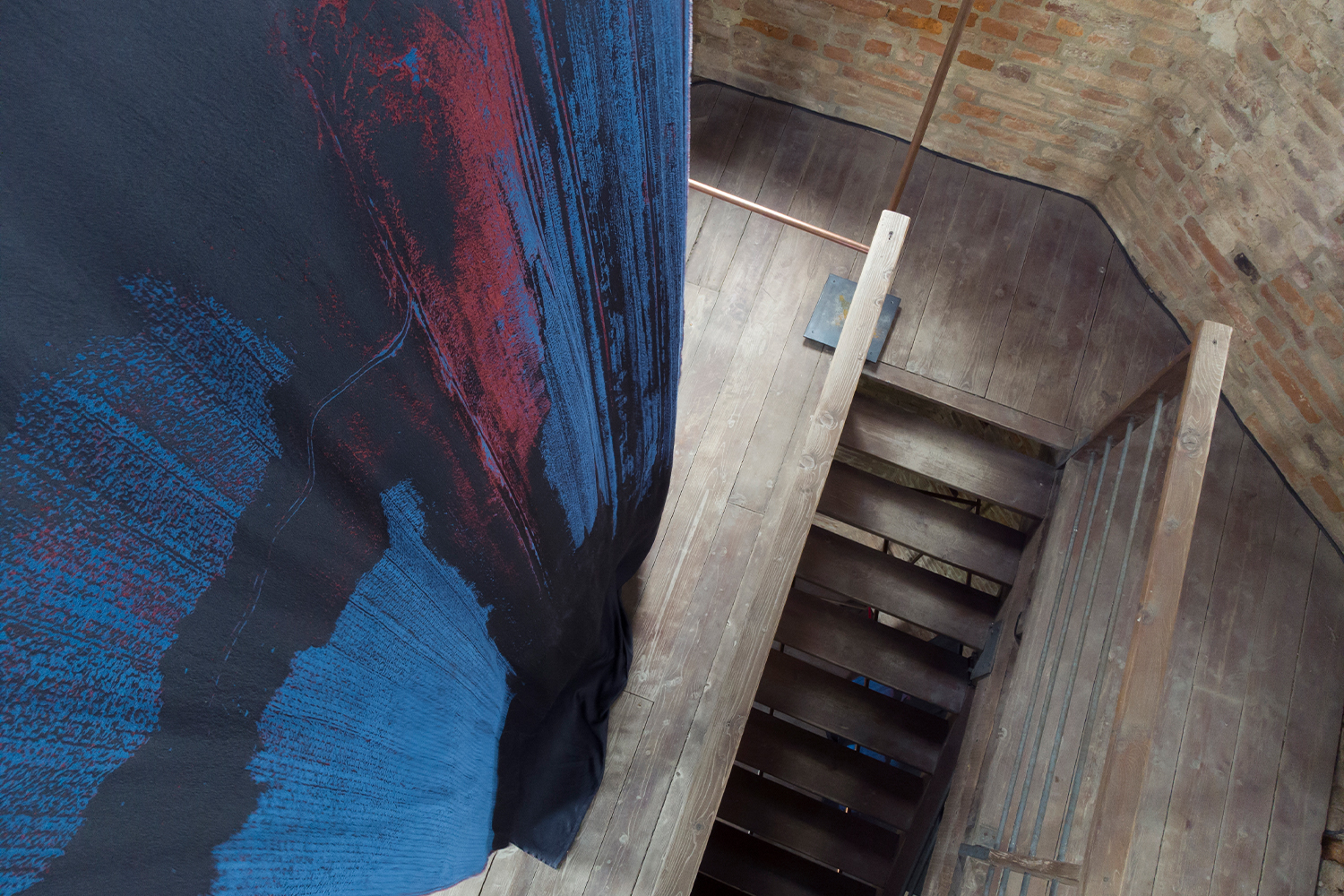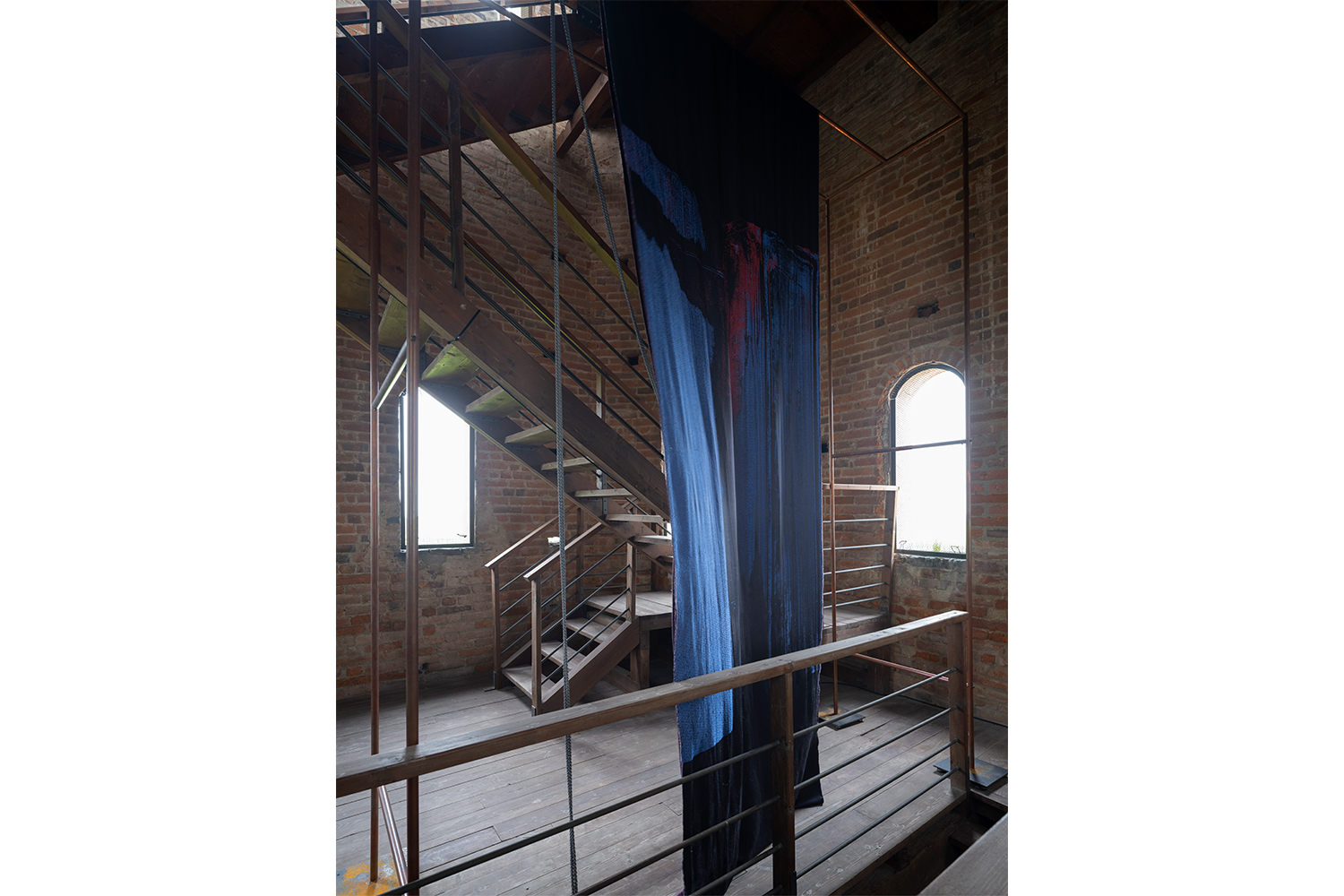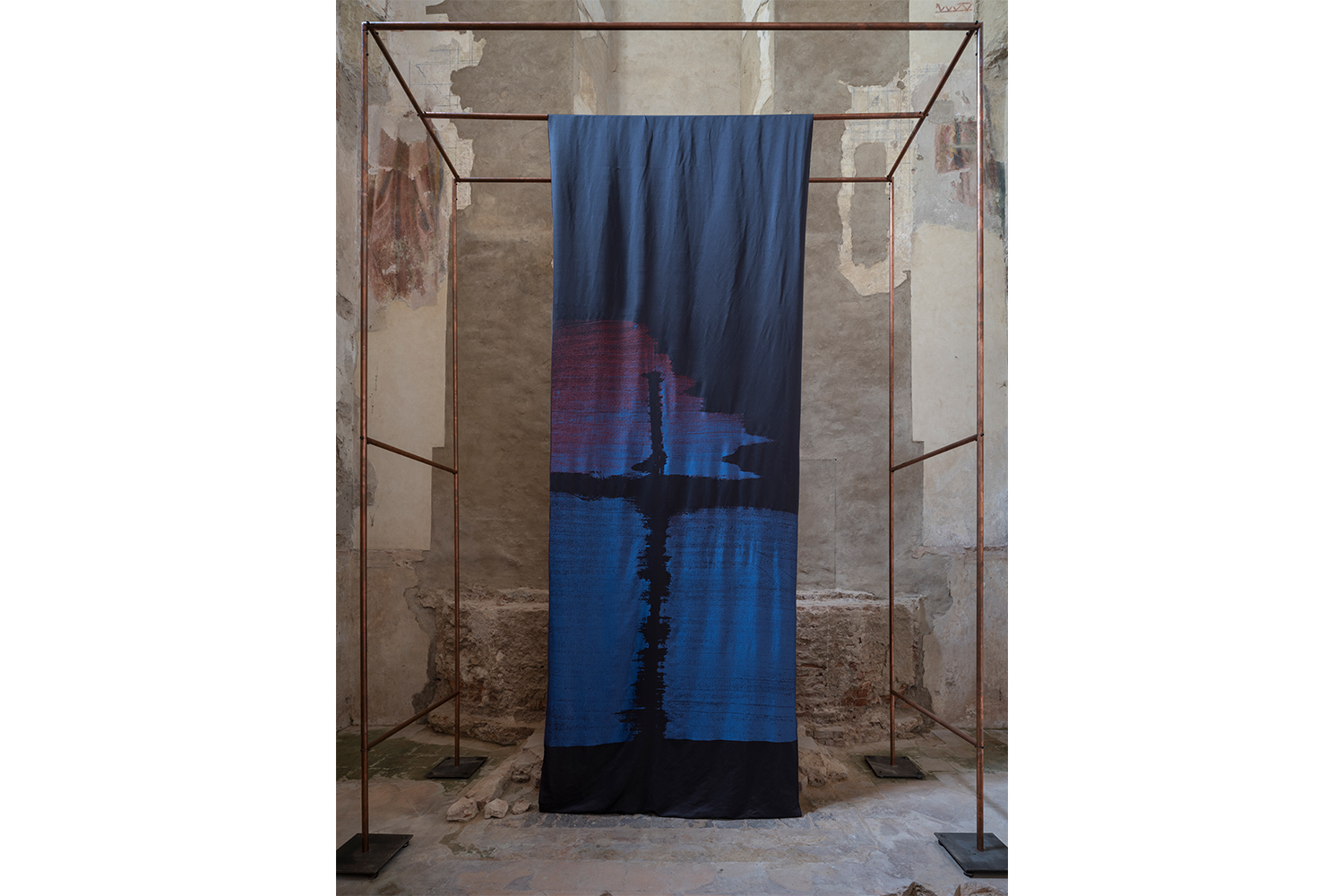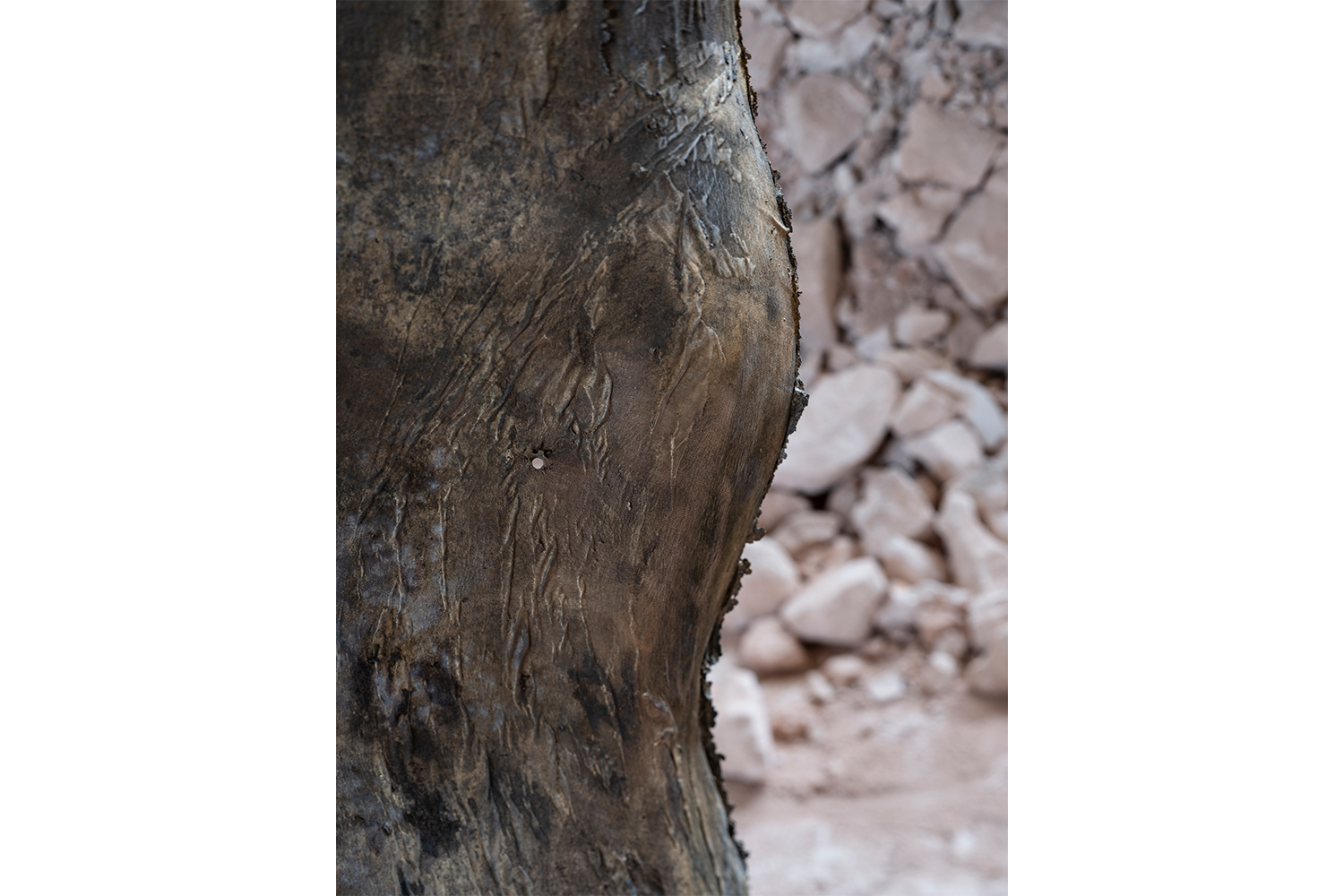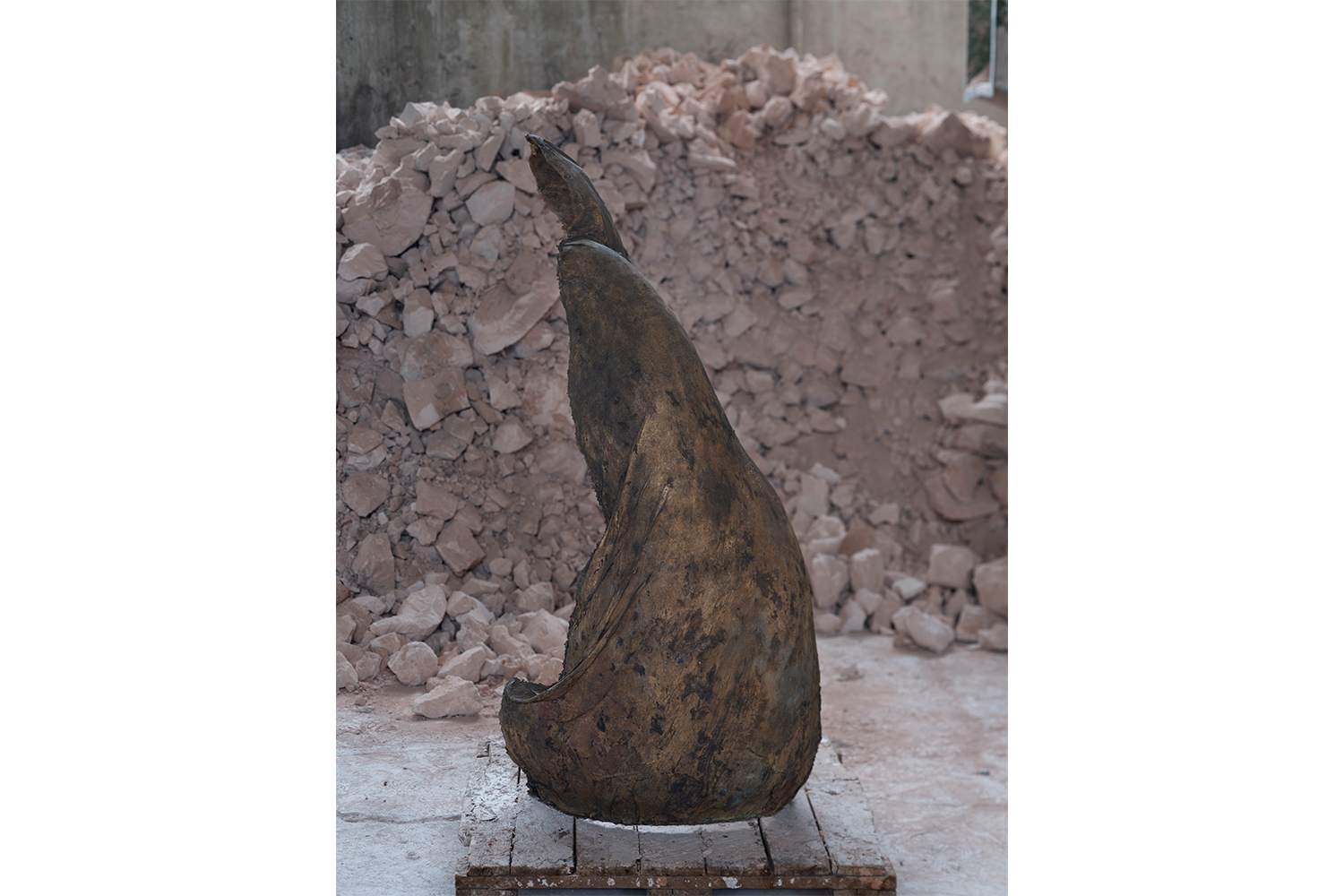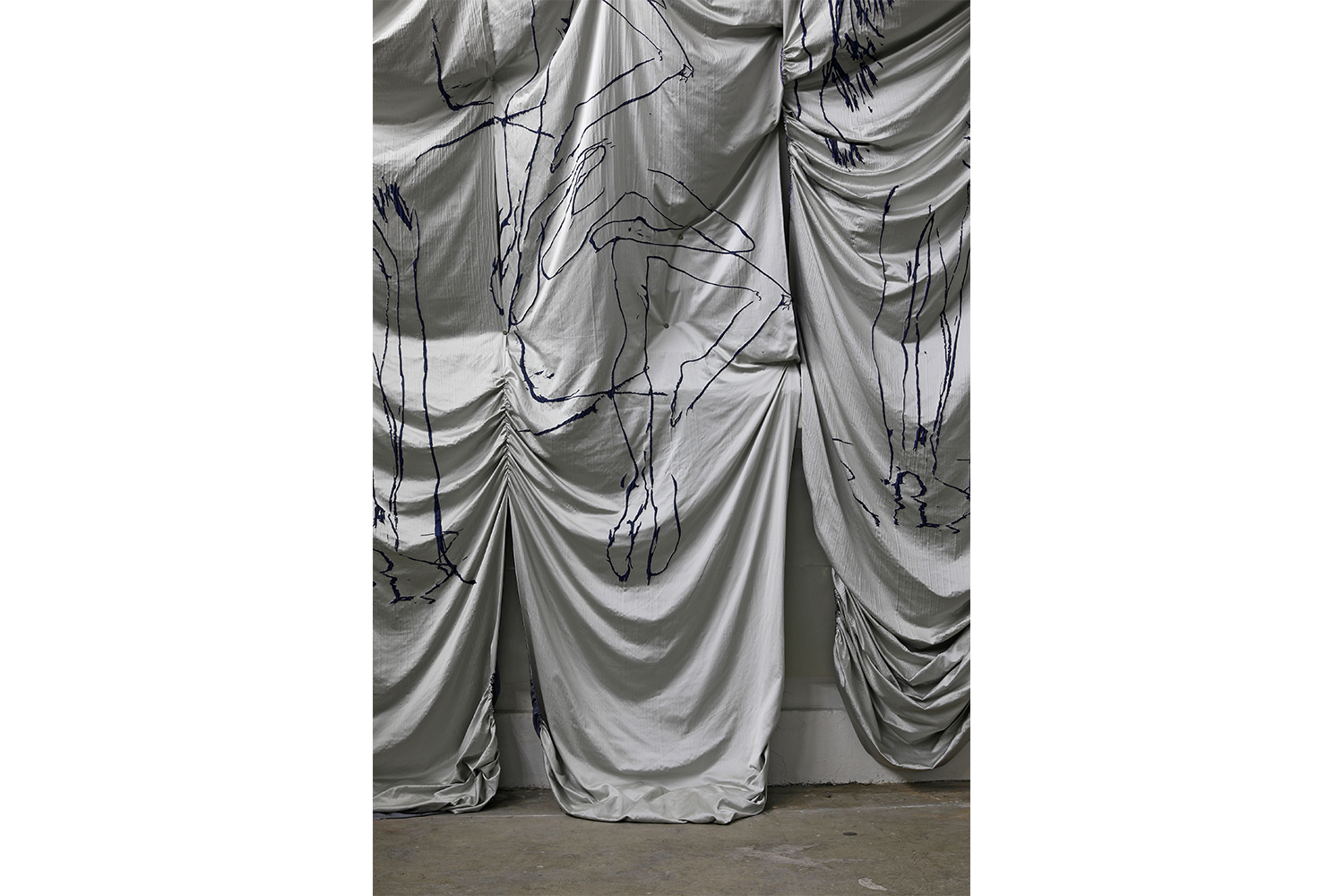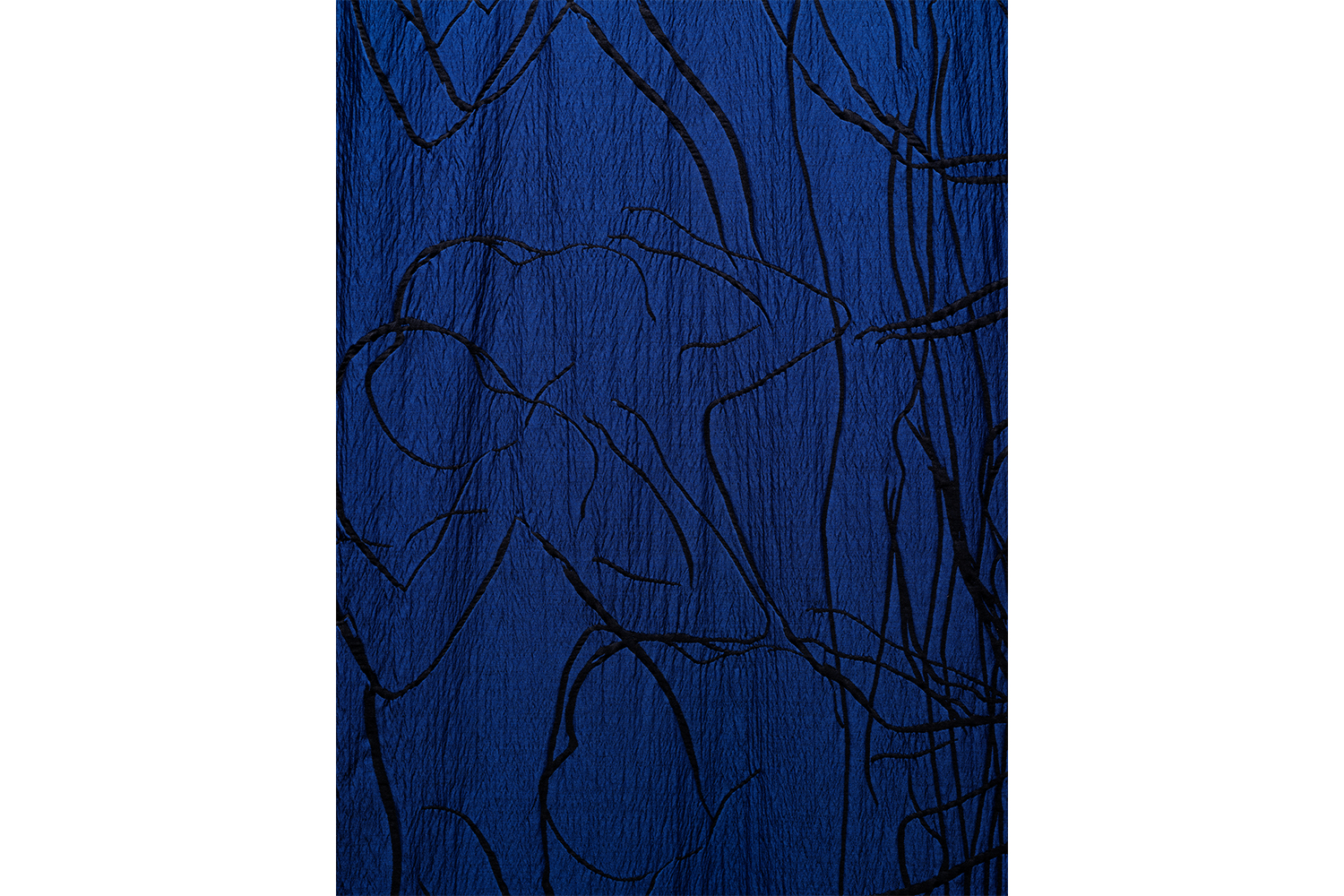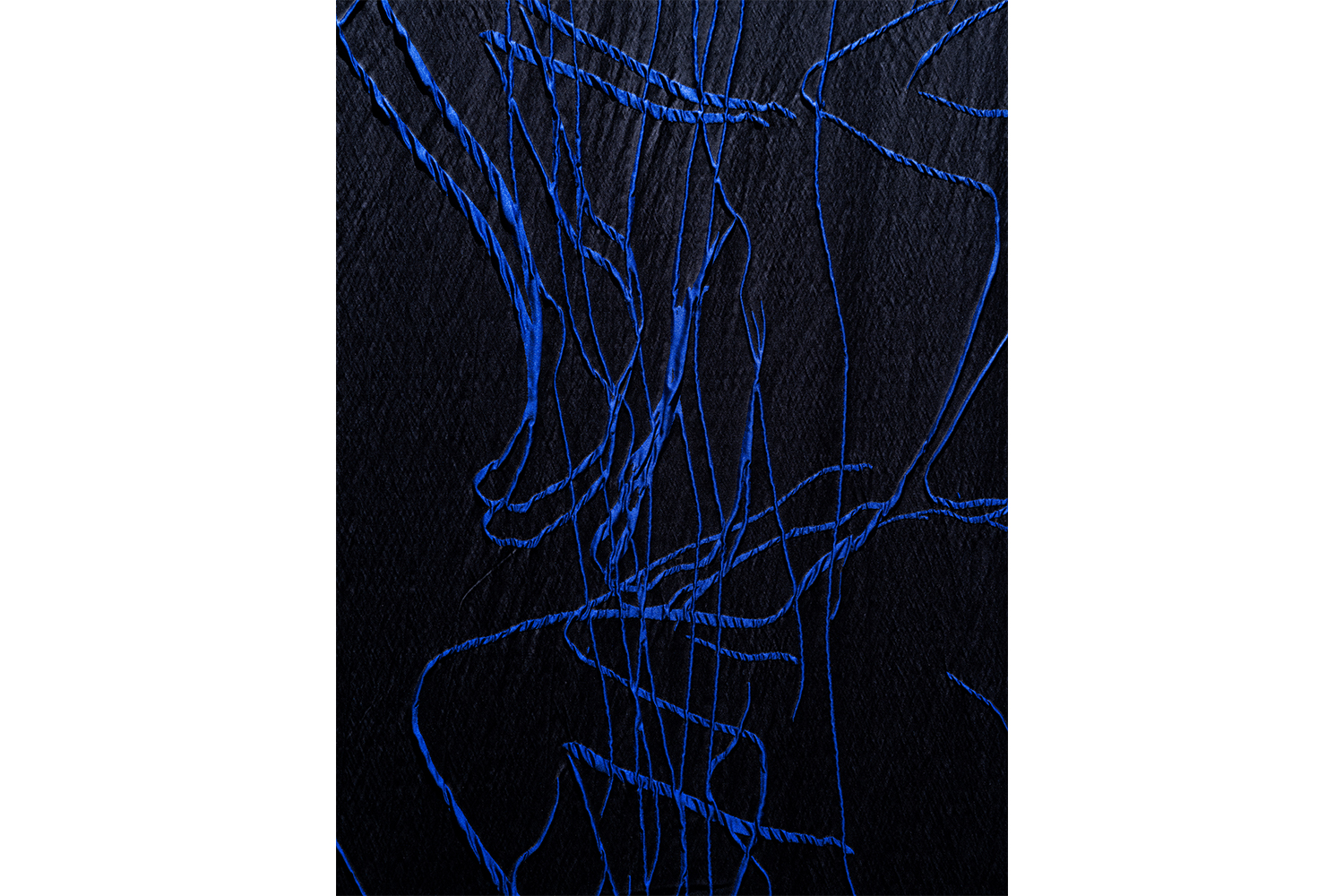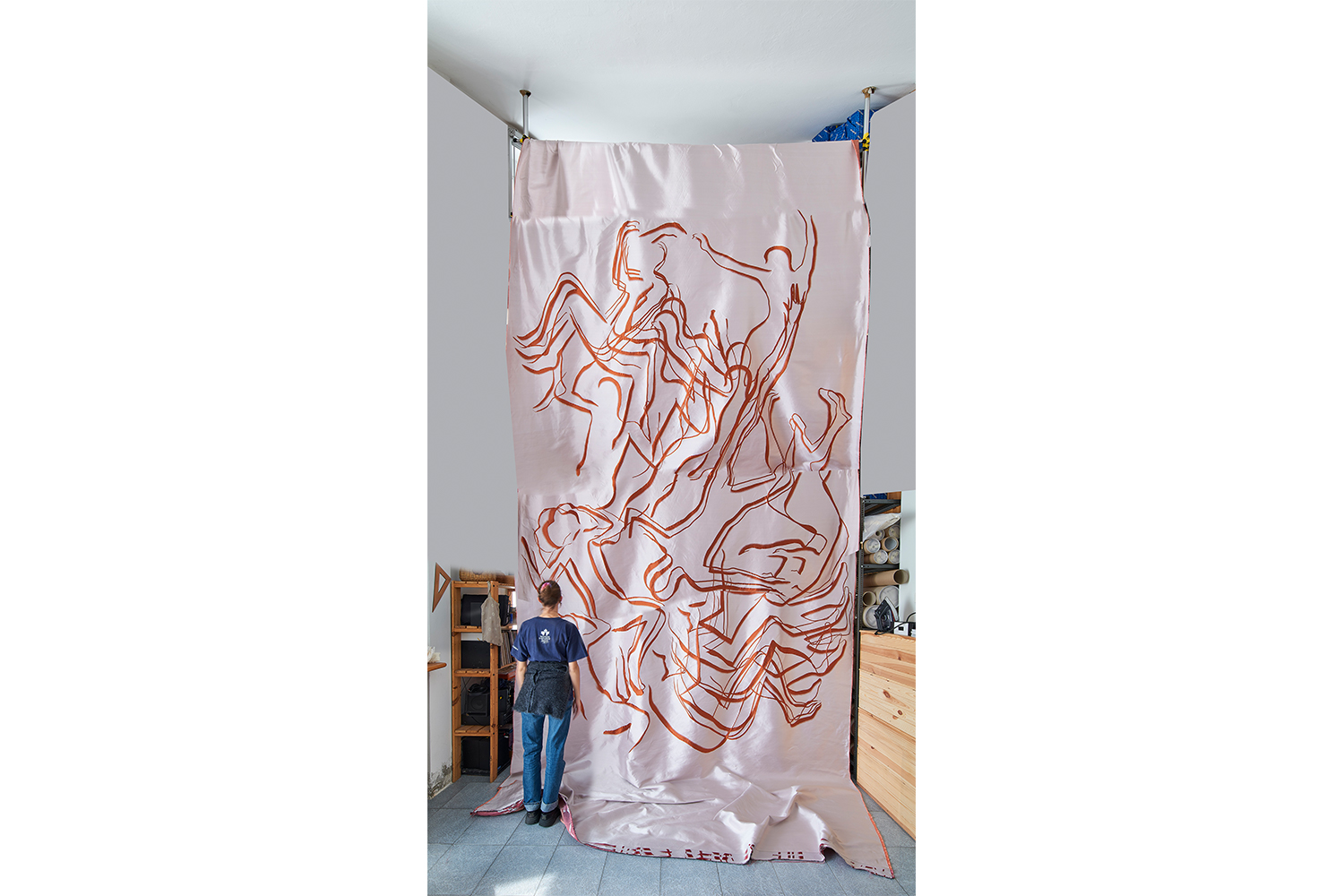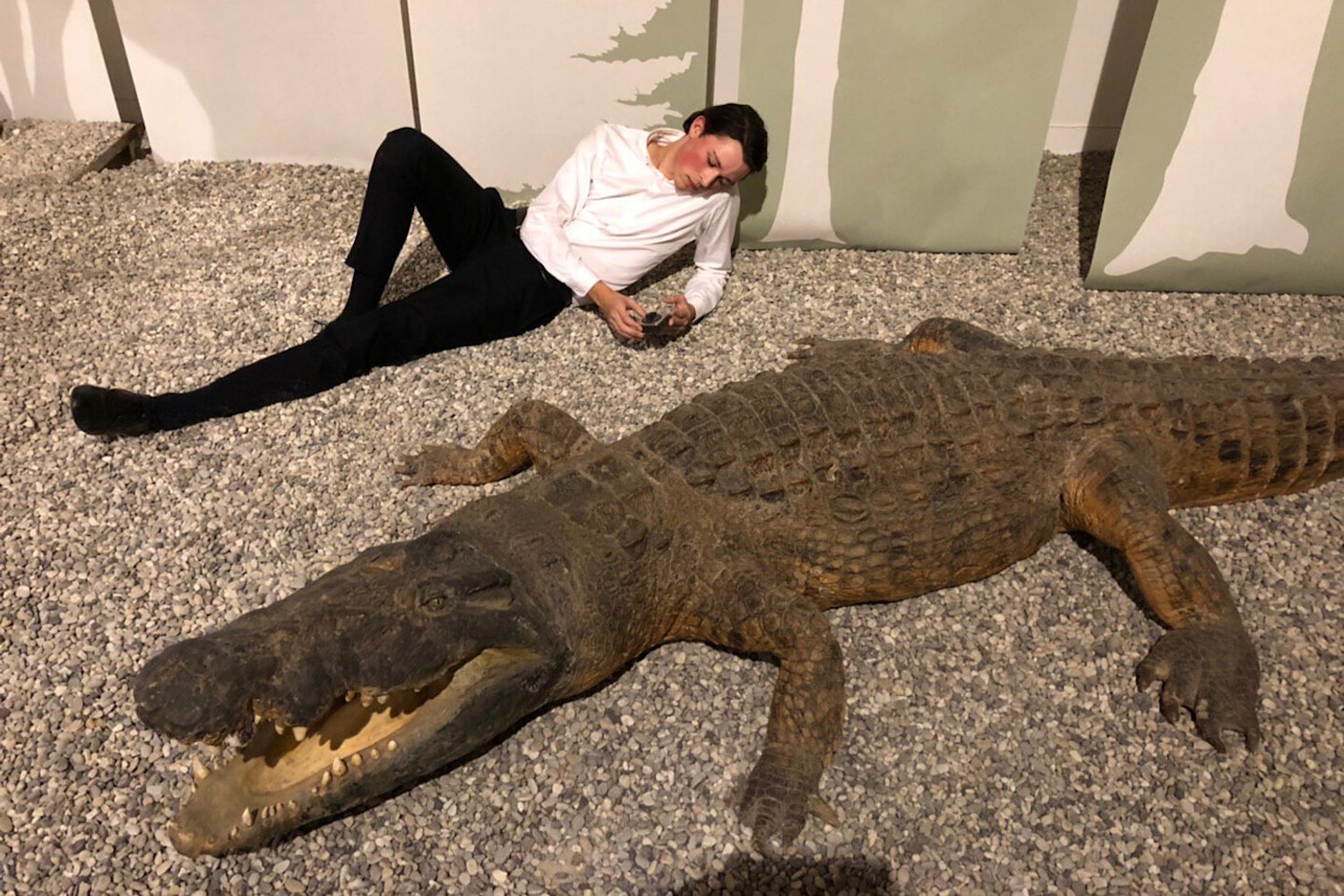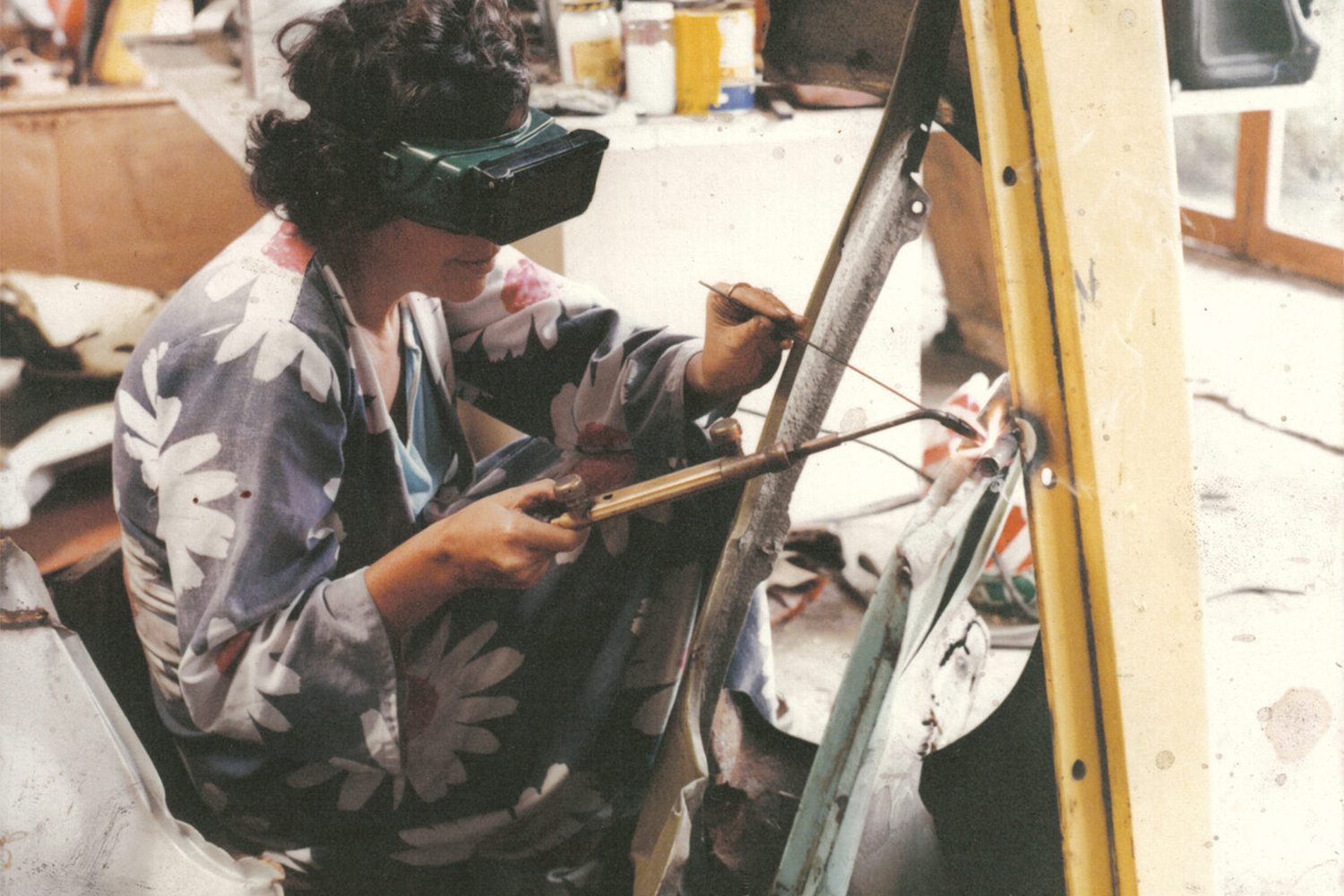My first meeting with Margherita Raso was in 2016, over breakfast. It was before her solo show “Piercing” (2017) in the current Fanta-MLN gallery, then Fanta Spazio, in Milan, in which she greatly expanded the scope of her sculpture, presenting work that was practically exploding, grazing the surface of a certain monumentality. Earlier sculptures by Raso in wood and porcelain (Lottatori, 2015), which were part of a group show in the Viafarini space, also in Milan, appeared vulnerable to me prior to that meeting. They were contained, on the floor, uncertain as to which threshold they should occupy. At the same time, however, they retained an almost one-to-one ratio between form and boundary.
When I first approached Margherita Raso’s work, I was still convinced that once a person meets with an artist — forming certain relationships and experiences — they are no longer able to discern why they feel the need to reflect (and write) about the work of that artist. That morning, Raso showed me Bianco Miele (2016), which she had not yet exhibited. It appeared to be a bronze cast with a strong plastic component: a sort of winged torso hollowed out inside. It was actually a piece of Jacquard fabric that she had used as a mold, first tearing and then applying a lost-wax technique. The form appeared when the bronze met the cavity through the melting of the wax and the Jacquard during the firing phase. Compared to the uncertainty of porcelain, there was a momentum here with boundaries that were no longer as delineated.
Our long conversation over lattes (very hot for both of us) ended with a singular affirmation of mine, which sounded like a wish that for some strange reason I kept remembering afterward: “To jump high you have to do a nice plié.” I also wondered, several times, why I had held onto that moment and what it had to do with Raso’s work. Less than a year later, “Piercing” arrived: fourteen Jacquard fabrics fastened in the manner of drapery with small magnets, mostly invisible, supported by bundles of corrugated sheet metal, standing parallel to cover the entire corridor. As the eye runs along the fabric it fails to grasp the sculpture in its entirety; there is always a point of view that is missing, that is lost, and although the overall shape traces the geometry of the space, there is no singular point of view. There is no longer a boundary. Something has opened up. The form, completed by the repeated silhouettes of a navy-blue body (that of Raso) woven into the silver drapery, opens and reenters continuously; it’s disorienting. One’s gaze is inevitably projected upward: an impetus of sculpture, a direct consequence of that unstable and precarious relationship in those fragment-sculptures that did not risk a higher “leap.”
Here, my memory leaped to the preface by Elio Grazioli of the Italian edition of Rosalind Krauss’s essential Passages in Modern Sculpture1, which asks the question, “What is modern sculpture?” The meaning of sculpture after the modern age is produced within the sculpture itself and does not precede it, as Krauss states, citing the case of Rodin’s Gates of Hell (1880–1917), which breaks the door’s canonical division into quadrants. This text still comprehensively explains the opening up of sculpture after conceptual art, after minimalism, after land art. It is that sense produced within the experience itself and always reinvented anew, what Edmund Husserl called “private in that it is inaccessible,”2 which is to say placed into the junction between the private self, of which each of us is aware, and the external object that presents itself through our gestures and movements. Sculpture, from Rodin onward, depends on the body: it is the first “door” to the object, a surface that encompasses both interior and exterior. Herein lies the meaning of the work, in that liminal threshold. In “Piercing,” the field within which the image develops, made up of fourteen pieces of fabric measuring 13 by 1.4 meters each, partially sewn together into a 255-square-meter total, is also linked in some ways to the size of a door, to the frame: it is the threshold. Raso, with this operation, generates a break in the development of work in space; the Jacquard drapes are thresholds with which the body (physical, gaseous, or otherwise) necessarily relates, with an evident limit due to that presumed monumentality.
I speak of an alleged monumentality because it would be misleading to interpret Raso’s work by linking it to its dimensionality and place in the site-specific sense. If it is indeed true that from that moment on her sculpture explodes and its field of action expands, it is also true that it is not that tension relative to size that is the element of reference, but that leap across the threshold, between outside and inside, between self and body — basically every image is a threshold, and what changes is the relationship that a body can have with it.
The verticality of the avant-gardes, before the Steinbergian “flatbed,”3 did not fully allow the body to break through the threshold, nor for the sculpture to be soft or to emancipate itself from form and embrace potential performativity (Michael Fried said that theatricality had invaded the field of sculpture). This becomes possible once the horizontal dimension inverts the paradigm and the sculpture is read as an expanded field4. The crisis of the form’s self-sufficiency accommodates the body, also transforming the frontal (vertical) reading of the object. The same is true when we relate to Raso’s sculptures, negotiating our movement between a horizontal plane and our biological development as vertical beings. For example, in Somersaults (2021) [from the English “somersault,” also meaning “mortal leap” or “overturning”], the copper-colored silhouettes fit together and move downward, between danger and play, suggesting an inversion of the surface. Our relationship with the object is always and in any case binary.
In one of her latest productions, Raso makes a further leap toward that relationship, considerably contaminating the sculpture and relating it to a very different setting: the bell tower of a church in the Principality of Lucedio, located in the vicinity of an extensive paddy field near a former nuclear power plant, closed since 1986, whose reactor is still active and constantly monitored. The research phase, which lasted about two years, developed from the grid module where the axes meet. From there, Raso starts from the geological dynamics of the place (hilly in nature), choosing to focus on a precise moment in which its space (the paddy field) meets time: a flood, when water bursts onto the paddy field. The eruption of water onto the field is configured as the breaking of the grid, the modernist one, but also that of the human exigency in which grasping (and stopping) time is almost impossible.
How does one embrace a body? In the same way, Raso wonders how it is possible to contain a space. She began photographing the area with a drone over the course of an entire calendar year, studying the chromatic changes on a sculptural and visual level. This macro-observation is like a large cast, an image, or a physical recording, such that the ground is configured as a potential material with which to interact on a sculptural level. The result is three images that depict the moments (time) in which the banks are broken by the flood water that enters. The actual time in which the water breaks through the grid and the structure of the “design” of the ground is about one day, and we might define it more as a moment of entropy than a real break.
“Casting the Tempo,” the title of the exhibition, therefore starts from a monumental, elusive dimension, from a bird’s-eye-view recording of the landscape that maintains a considerable distance from an excessive, morbid, almost pathological micro-focus on the armor, that is, the matrix of the Jacquard weaving process. The process, which years ago led her to “Piercing,” in which she played an active part in that sculptural explosion, is now in a certain sense is reversed, insisting on abstraction and the mechanics of the textile process as a matrix that arrives at sculpture: the diptych of prints on paper. On display in Lucedio is a one-by-one-centimeter weave of Jacquard fabric. Each centimeter of fabric contains eighty-four threads (red-and-white squares) of warp. Raso works on these two modules — Canto for The Flooded Field (2021) — emancipating the sculptural element of “structure + fabric” from an architecture that embraces it but does not become its skin (as in “Piercing”), and entrusts them to American musician Kali Malone, who composed a sound work by interpreting and analyzing the structural information of the two modules, as well as fragments of the weave of two of the Jacquard fabrics present (Slow No. 1 and Slow No. 2, both 2021). Malone musically interprets the armor patterns by zooming in on a single point she perceives as central to the motif, then mapping that shape onto related musical structures. By examining just a few millimeters of the Jacquard pattern, Malone develops a type of algorithm that leads her to determine musical information regarding rhythmic duration, canonical structure, and octave variations. The rigidity of the parameters defined by the algorithm determined the progressions of chords and harmonic material. Malone composed the entire track for pipe organ; the choice of the instrument is linked to the only intact image present in the church: the painting of an organ placed on the choir loft — an image-simulacrum that functioned as an epiphany for Raso, who associated it with the loom and its mechanism. The succession of pedals and relative sizes of pipes that determine pitch inspired Malone to translate the weaves of the textile into a composition for pipe organ. The forty-minute track also contains the moment of the flood, which Raso perceives as a dilated temporality — in a certain sense a constriction.
Sound adds a sculptural dimension to the exhibition that emphasizes the perception of time and space. The mass of air, the volume of sound, place the three sculptures in a liminal and ambiguous position: they are three-dimensional sound surfaces, affected by time and the air that penetrates the bell tower where they are located. The four floors of the building, which are rather narrow, inevitably mark a path from earth to sky, within which the three Jacquards stand out, each supported by copper structures — a conductor, in this case associated with water — of four meters, generous but discreet grids that leave room for the textiles in anthracite gray with arbitrary colors ranging from cold to warm.
The image, the shape, the temperature (the warmth that Raso imprints on the fabric that reveals the grain of the design) are all elements inextricably linked to the remediation process8 that the material undergoes — from sculpture to sound score. The binary relationship between image and sound is linked to haptic perception,9 which, despite being an invisible element in Raso’s practice — spatial, massive in some ways — is structural. The sound image, optically tactile, as configured in Lucedio, is the result of a complex but conscious work of stratification intended to reach a certain degree of perception: here the threshold opens to cross the verticality of the work, which does not end in its plastic, tactile, bulky, or chromatic component, nor even in its specificity within the place. This vertical axis, given by the upward tension of the sculptures — as well as the place where they are placed — expands with the movement of crossing the threshold. The vision is always partial, and even when there is a possibility of frontality, it is never fulfilled in a definitive way.
Margherita Raso’s work is placed in what I would call an expanded verticality,10 a way of freeing certain sculptural productions from their purely physical and site-specific dimension; considering the tension upward as one of the components to cross and register the various media references in the work. The specificity linked to the place, for Raso, is only a manifestation of one of the possibilities of perception, and not merely the location of the sculpture in a specific place.
Let’s return to that vulnerability — that existed in Bianco Miele (2016) and today in Untitled (2021), a bronze sculpture made with the same procedure — which continues to be present in Raso’s work in a way that enters consciously into the mechanisms of production and that stresses time in an attempt to occupy the ceaseless diversity of space.

